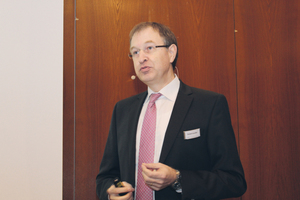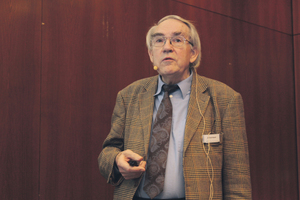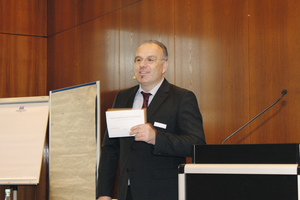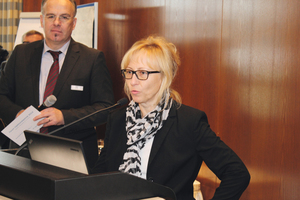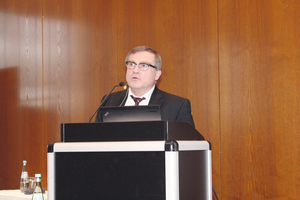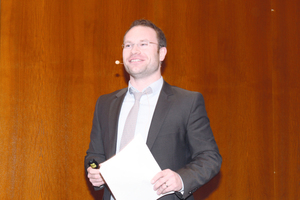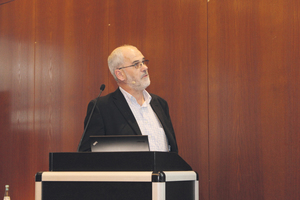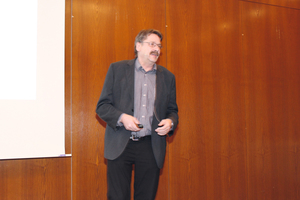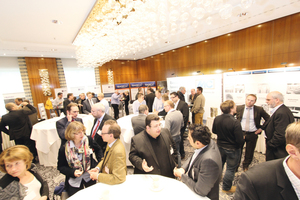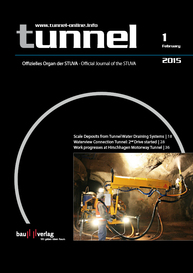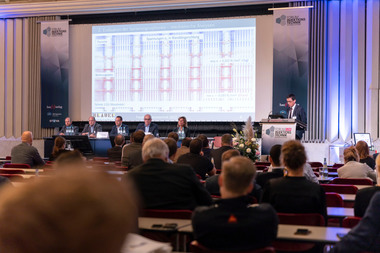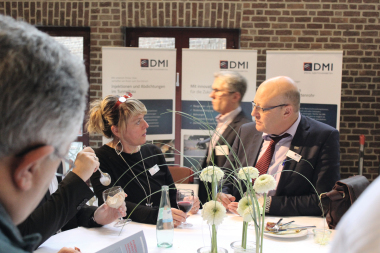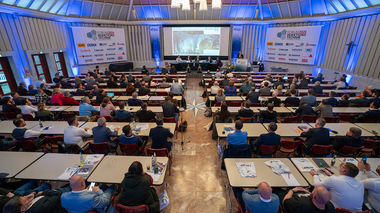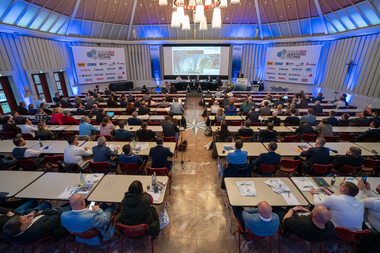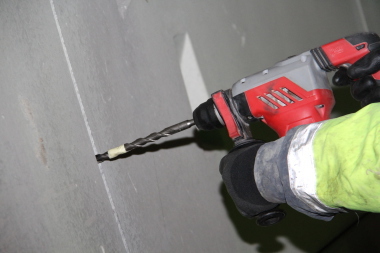Forum on Injection Technology:New ABI Leaflet presented
Within the scope of the first Forum on Injection Technology in Düsseldorf in late November 2014, the third edition of the “Sealing of Buildings through Grouting” Leaflet (ABI-Merkblatt), which had been revised in many key sectors, was presented.
The new ABI Leaflet
This new edition of the ABI Leaflet, which is published in German language, describes the latest state of the art in the field of subsequently remedying damage affecting the sealing of structural parts in contact with the earth. It was compiled by a working group of recognized experts from the spheres of planning, material processing, execution and material testing under the aegis of the Research Association for Underground Transportation Facilities Inc. (STUVA). The materials and means of application described in this leaflet frequently represent the sole effective and economic possibility for remedying damage. For a whole series of materials and methods applied in this connection no application standards or technical regulations exist. The new edition was thoroughly revised based on the previous editions dating from 2005 and 2007. Moreover supplements were added to various sections. The new edition also reflects to a major degree practical experiences gained in construction, the continuation of national and European codes of practice as well as increasing expert knowledge following careful appraisal of recent research results.
The new ABI Leaflet provides numerous technical solutions and pointers for those involved in construction schemes. It has in the interim become an established standard publication for injection technology and represents an essential and useful source of information for offices dealing with tenders, responsible contractors as well as material and equipment manufacturers. The current state of injection technology for waterproofing structures is also of great importance for owners, public authorities and those using buildings.
The Forum on Injection Technology also enjoyed a good turn-out in view of the widespread relevance for various professional groups and the topicality of themes relating to the redevelopment of existing structures. More than 90 participants attended the lectures and were briefed at the accompanying exhibition about current methods of application and materials by producers, contractors and planners.
First-Hand Information
The forum was staged jointly by the Bauverlag, the STUVA and the IBE-Ingenieure engineering office. Dipl.-Ing. Jörg de Hesselle, the spokesman for the ABI Leaflet working group chaired the programme, which among other things was able to provide information from the authors of the Leaflet at first hand as well as the state of the art and the selection of suitable grouting agents and methods. The range afforded by injection technology was directly illustrated on the basis of practical examples from projects that had been undertaken.
After STUVA CEO Dr.-Ing. Roland Leucker had held the opening address, Prof. Alfred Haack, head of the working group for the leaflet, summarized the ABI Leaflet’s structure and range of topics – from the general rules and planning approaches for sealing structures with the help of injection technology by way of the properties and possibilities for applying the most common grouting materials used at present right up to sections dealing with execution, monitoring and quality assurance.
In his paper, Jörg de Hesselle touched on the need to plan sealing injections. The essential components of such planning are: a clear target, prior investigation to determine the causes, details relating to the structure and subsurface and finally the targeted choice of method based on the preliminary investigations. The various fields of application of curtain grouting, areal grouting and injecting settlement joints were examined by means of practical examples.
Various Grouting Agents for various Applications
Dr.-Ing. Ute Hornig from the MFPA für das Bauwesen, Leipzig, provided an insight of the available grouting agents and technologies, material properties as well as general and project-specific requirements on performance. According to Hornig the choice of grouting agents is essentially dependent on the actual application. However as many agents with special properties cannot be classified in standard categories, proof in keeping with test reports in accordance with the ABI Leaflet is necessary for proper application.
Dipl.-Ing. Matthias Rudolph (MFPA Leipzig) presented a paper on crack injections of reinforced concrete elements with acrylate gels and made their advantages evident compared with alternative materials such as polyurethane resins, epoxide resins and cements.
Legal Issues and detailed practical Knowledge
The Forum programme also dealt with legal aspects of planning and building using the ABI Leaflet: Dr. Meinhard Forkert’s lecture was followed with great interest, something reflected by the numerous queries that resulted from the audience.
Dipl.-Ing. Rainer Angst from the BeMo Tunnelling GmbH talked about executing injections in rock based on extensive practical experience. In doing so, he emphasized the importance of quality management through drafting a grouting concept (leading to the provision of precise working directives) and exact documentation, for example based on grouting reports and strength tests.
The final paper presented by Dr.-Ing. Knut Herrmann (MP Brunswick) examined the subsequent sealing of urban road tunnels and pedestrian underpasses with special focus on waterproofing joints. These frequently represent a weak point for tunnels with respect to tightness in structural terms. Subsequent sealing is a non-regulated special method, which must be undertaken within the scope of expert planning.

